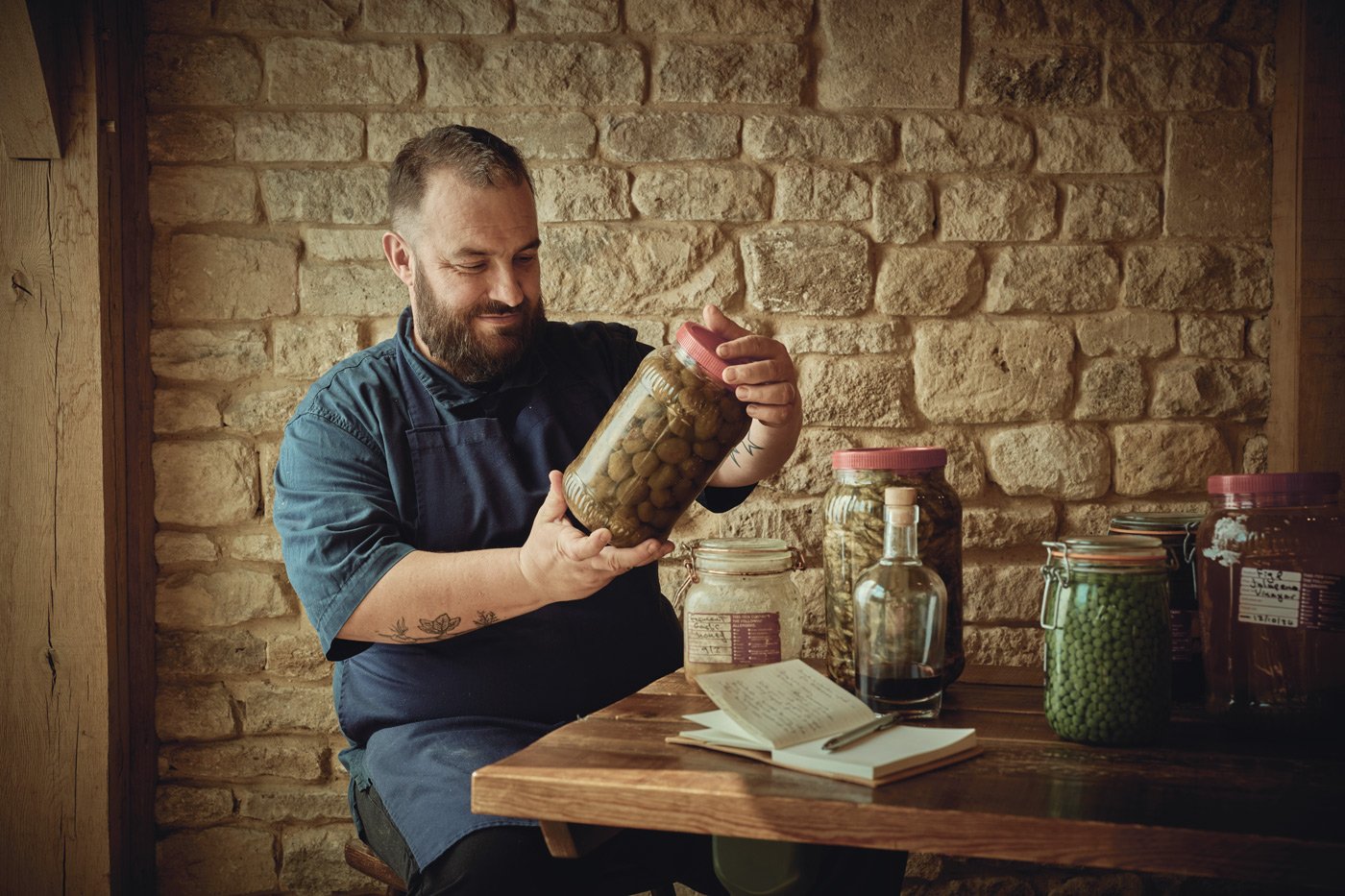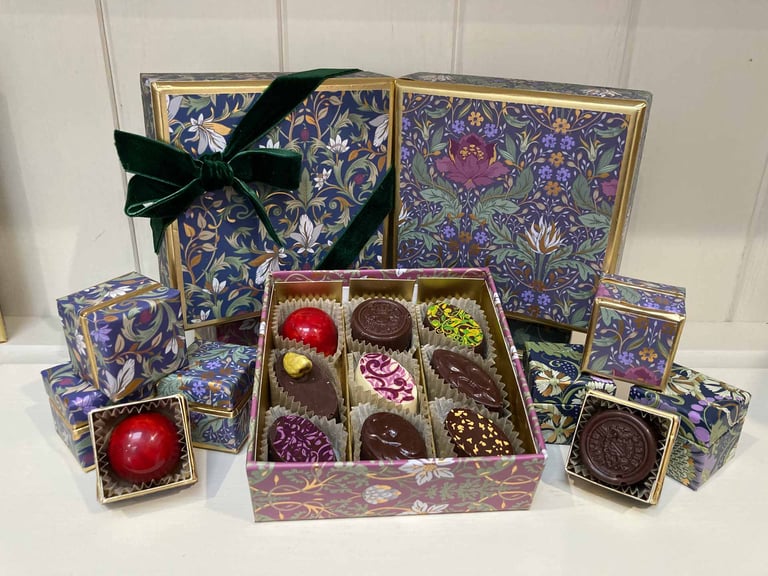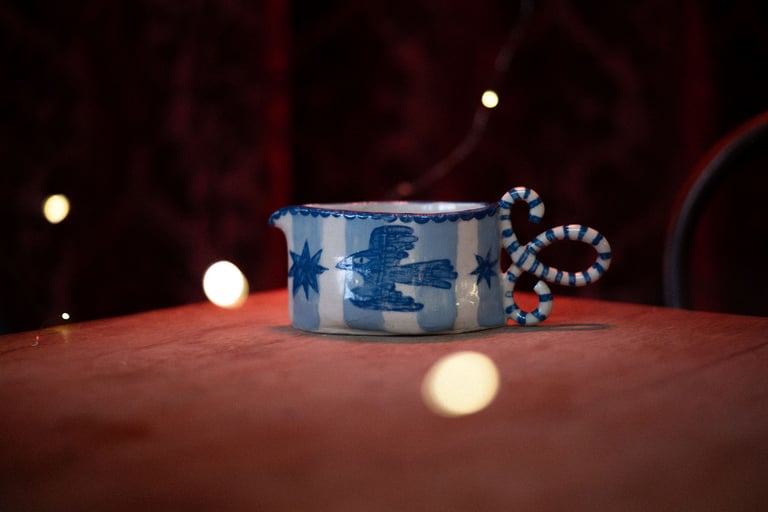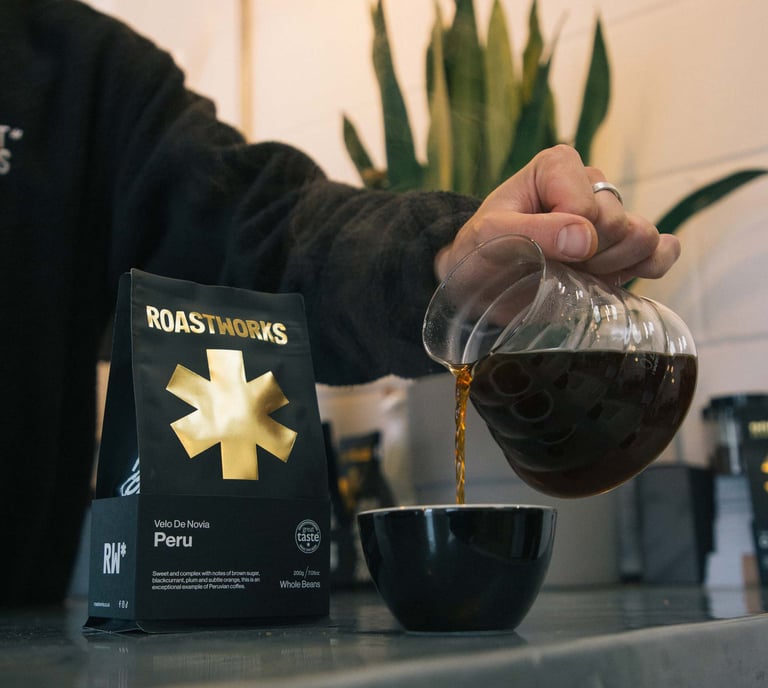Iford Manor Kitchen’s executive chef Matthew Briddon introduces Jo Rees to the mother of all cheese accompaniments – and reveals how to make fermented walnuts at home
Pickled walnuts may be a cheeseboard classic, but fermented walnuts? Who even knew they were a thing? Well, Iford Manor‘s executive chef Matthew Briddon, for one.
Matt is a fermentation fiend who crams vegetable offcuts and garden-produce gluts into jars that line his roomy fermentation cupboard. Ostensibly, his objective is to use up ingredients from Iford’s restaurant and gardens that would otherwise go to waste, but clearly he also gets a creative thrill from his adventures with Kilner jars.
Matthew gave walnuts a whirl when the estate’s head gardener Steve Lannin delivered a pile to his kitchen door late last summer. Steve wasn’t convinced the nuts from one of the walnut trees in Iford’s astonishing garden would ripen, so asked Matthew if he could do anything with them. And the chef, working on the premise that most things when fermented become more delicious, took on the challenge.
He washed and dried the nuts and stuck them in a jar filled with brine, adding a little birch sap for sweetness. Six months later, the soft fruit (like pickled walnuts but green, sweet and full of umami character) were ready – and stunningly delicious.
Matthew explains: ‘Sugar – whether birch sap, honey or even brown sugar – revs up the fermentation process because it feeds the bacteria. It also alters the flavour in a good way.’

He serves the fermented walnuts with bitingly sharp Westcombe Mature Cheddar, his own fermented wild-garlic leaves and homemade sourdough crackers. It’s a veritable feast crafted out of foraged finds and surprisingly simple ingredients.
If you want to ferment walnuts at home, the trickiest part is getting hold of fresh walnuts in the first place. Lucky you if you’ve got a walnut tree (or a friend with one). Failing that, ask your greengrocer if they can source them at market.
Matthew says: ‘Make a three per cent salt brine and add sweetness – maple syrup, black treacle, brown sugar or honey will all do the job. Three tablespoons is about right for a two-litre jar, but you can do it to taste.
‘It’s as simple as that really. Just make sure you run the jar through the dishwasher or rinse with boiling water first to sterilise it. Cover the walnuts with brine and place a saucer or muslin on top of the nuts to hold them down. It’s essential they stay submerged.
‘Then leave them for six months or so out of sunlight and where there are no strong odours as they will pick up flavour. Definitely don’t keep them under the sink with the bleach! However, because they absorb flavours easily you can spice them up by adding nutmeg, cinnamon and rosemary to the brine.’

If you can’t get your hands on fresh walnuts, Matthew suggests using the same technique with dried, shelled walnuts (the kind that crown Walnut Whips).
‘When you ferment them in the same way they’re called “wet walnuts” and are a brilliant addition to a cheeseboard.
‘Use the same sweetened brine mix and the same process and when they’re fully fermented, in six months or so, they’ll be soft. You can squash them like you would garlic; they make a really good pesto. They’re also great in sauces served with game.’
Does adding sugar to fermenting ingredients increase the likelihood of the jar exploding or the whole thing turning to alcohol? ‘That’s something you’ve got to watch.’ says Matthew. ‘I’ve definitely had some disasters over the years, but it’s about keeping an eye on them and knowing how far to go before you strain it off.’
Burping helps mitigate the risk as it removes excess gas from the Kilner jar. Matthew suggests burping your jars once a week or, if you’re going away on holiday, using an elastic band (tied around the metal clasp of the jar) to keep the jar closed, instead of locking it shut. Then, when the pressure builds, the gas can push the lid open a little and escape.
Get stuck into our tastemakers interview with Iford Manor Estate owners Marianne and William Cartwight-Hignett now.









